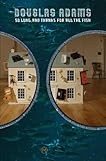Ballet shoes, also known as flats or slippers have been worn by performance artists for many Centuries, with the traditional ballet flat shoe being a development of the original heeled shoe which was worn by women in the late 1600's. This type of footwear has many attributes which make them a favourite with women of all ages as fashion items, giving stylish design and light, easy wearing footwear for a variety of occasions.
The History of the Ballet Shoe
In the early day's of ballet, women were not allowed to dance. It was only in the reign of King Louis XIV and the founding of the Royal Academy of Dance that women were brought onto the stage to perform ballet. Initially ballet shoes followed the fashion of the time and were solid shoes which had a pronounced heel. This didn't allow women do perform some of the more complex routines which we see in ballet today and restricted movement of the foot. Birth of the modern ballet flat shoe has been attributed to the 18th Century dancer marie Carmargo of the Paris Opera ballet, a trend which continues to this day.
 The Construction of the Ballet Shoe
The Construction of the Ballet ShoeBallet flat shoes have a unique construction which lends itself to movement of the wearer's foot, giving flexibility and stability to the toes, allowing arch movement and giving the best possible balance for the ballet dancer. There are two types of ballet flat shoe in common use - the standard lightweight dancing shoe and the 'pointe' shoe which is worn for centre work on stage, for performing spins and any movement where the dancer is required to stand upright on the toe. Both types of shoe rely on similar construction methods in order to offer the dancer the best balance and poise.
Construction material for modern ballet flat shoes hasn't really changed much over the years, with canvas, soft leather or satin being used. The only real change in construction is the use of modern glues to hold these shoes together instead of the traditional stitching used previously. Higher value ballet flats still utilise traditional construction techniques and are thus seen as higher quality items.
The soles of ballet flat shoes is usually made of thin leather in order to offer the wearer the best foot flexibility. Sometimes a centre plate is sewn into the ball of the slipper in order to give additional support, especially important on street wearable versions of this type of footwear as otherwise they would wear out too quickly.
 Modern street interpretations of the ballet slipper
Modern street interpretations of the ballet slipperAs with many forms of footwear, ballet shoes or slippers have morphed into street wear. Whilst these street wearable ballet shoes bear a passing resemblance to traditional dance wear they vary greatly in construction, being made of tougher materials and offering longer lasting soles.
Modern street wear interpretations of the ballet flat shoe from brands like Bloch offer the look with a well formed sole allowing the wearer to use this type of footwear on concrete and tarmac as well as in the house, giving real flexibility as well as a great style.
If you are looking for traditional female style in a shoe which allows real flexibility for your feet then look no further - find yourself some good ballet flat shoes!
Fashion That Is Different offer a range of stylish ballet inspired footwear ideas from top brand Bloch ballet.


























































No comments:
Post a Comment
Please leave us some love...and have yourself a groovy day~!! Peaces...xoxo